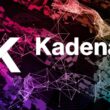The Funding is a fortnightly newsletter written by Yogita Khatri, The Block’s longest-serving editorial member.
Crypto liquid funds have taken a beating this year so far, with losses of up to 70%, multiple investors I spoke to told me (such figures are typically shared only internally and with limited partners). After a rough Q1 2025, liquid fund investors are now concentrating on a smaller set of high-conviction bets. This cycle, fundamentals — not momentum — are driving decisions.
Most liquid funds entered the year strong but got crushed as financial markets, including crypto, were hit by broader turmoil — from tariff policies to macro uncertainty. “What started off as a very strong first few weeks saw the entire altcoin market collapsing starting in mid-January,” said Rob Hadick, general partner at Dragonfly. “Bitcoin is down ~10% on the year, Solana ~30%, and Ether ~50%, and with many altcoins even worse, it’s been hard for funds to find a place to hide.”
Most liquid funds bet heavily on Solana in 2024, and that dragged down their returns this year so far, said Jack Platts, founder of Hypersphere Ventures.
Part of the drawdown is tied to expectations. With bitcoin now easily accessible to institutional investors via ETFs, active managers are “often explicitly asked” not to hold it, said Cosmo Jiang, general partner at Pantera Capital, who oversees the firm’s liquid token strategies. Investors look to liquid funds for exposure beyond bitcoin — or even ether.
Still, bitcoin becomes the default benchmark for measuring liquid fund returns — skewing perceptions of fund performance. But that’s not an ideal benchmark, according to some investors. “Bitcoin as digital gold is categorically different from a DeFi token that resembles equity. No one benchmarks equity investor returns to gold, so why should we?” said Ryan Watkins, founder of Syncracy Capital, a crypto hedge fund that has “9 figures” in assets under management, meaning at least $100 million. Jiang added that he also views the crypto universe as two tracks: bitcoin as digital gold, and “everything else” as blockchain technology. “One can succeed independently of the other,” he said.
Not all liquid funds have struggled equally. Directional strategies — which bet on token prices going up or down — took the biggest hit, especially in altcoin-heavy portfolios, investors said. Market-neutral and delta-neutral strategies fared better, thanks to their focus on arbitrage, yield or other low-risk trades. “I haven’t seen any market-neutral funds that have blown up or had a lot of issues. Those generally make 1% to 2% per month,” said Platts of Hypersphere Ventures.
From chasing momentum to filtering for quality
Liquid fund managers are cutting long-tail exposure and concentrating on tokens with fundamentals — cash flow, usage and value accrual.
Overall, Q1’s poor performance has pushed liquid funds to shift their capital allocation strategies. Several investors said they’ve narrowed their exposure and are concentrating on fewer, stronger assets. “We’re taking higher conviction bets, less investments,” said Platts. “A portfolio of 20-plus altcoins underperforms a portfolio with six to 10 altcoins.” Some liquid funds are also exploring listed equities with crypto exposure, Platts said, citing Janover, which is aiming to become “the MicroStrategy of Solana.”
Martijn van Veen, managing director and partner of M11 Funds, also said his firm’s — and in general, liquid funds’ — focus is now on quality tokens. “We believe investors, i.e. funds like us, are gradually positioning themselves to start buying the quality tokens that can be valued more akin to traditional listed equities,” van Veen said. “With more regulatory clarity coming up, especially in the U.S., this might be a trend to continue for some time. It’s premature to predict an altcoin season given current prices, but a flight to quality seems to be unfolding.”
Van Veen also revealed that M11 Funds is preparing to soon launch a second liquid vehicle, the M11 Crypto Core+ Fund, alongside its current M11 Liquid Token Fund. M11 Funds is part of M11 Group, which also has a separate venture fund division called Maven 11.
Meanwhile, DeFi and “a few very selected” Layer 1 tokens remain in focus for liquid funds like DeFiance Capital, which now prioritizes tokens with “actual value accrual and fundamentals,” said Arthur Cheong, the firm’s founder, CEO and CIO.
Sam Lehman, principal at Symbolic Capital, also said fundamentals are becoming central to investment theses, pointing to recent token investments by venture capital firms a16z crypto and 1kx in LayerZero and Layer3, respectively. “That old crypto VC playbook (investing via SAFTs [simple agreement for future tokens] shortly before TGE [token generation event] and seeking quick flips) is becoming less viable due to longer lockups and the need for real business building,” Lehman said.
That flexibility to invest in liquid tokens is becoming a priority for some other investors, too. Hypersphere’s fifth and latest venture fund has an open mandate to go up to 100% liquid if needed, Platts said. He added that VC funds with flexible mandates are best positioned to catch “mini-cycles” in sectors like how AI agents had one recently.
Overall, the liquid side of crypto isn’t just evolving — it’s expanding. Watkins of Syncracy noted that venture fund returns have been weaker than liquid fund returns, deal quality is down, and the liquid market is now more attractive than before. “There’s simply not enough attractive opportunities in private markets,” he said.
Van Veen said most crypto allocations still lean venture-heavy today, but that’s changing. And if crypto follows traditional finance, the direction is clear. “In traditional finance, hedge funds are 10x larger than venture funds,” said Zaheer Ebtikar, founder and CIO of crypto hedge fund Split Capital. That may be where the crypto liquid fund industry is headed.






